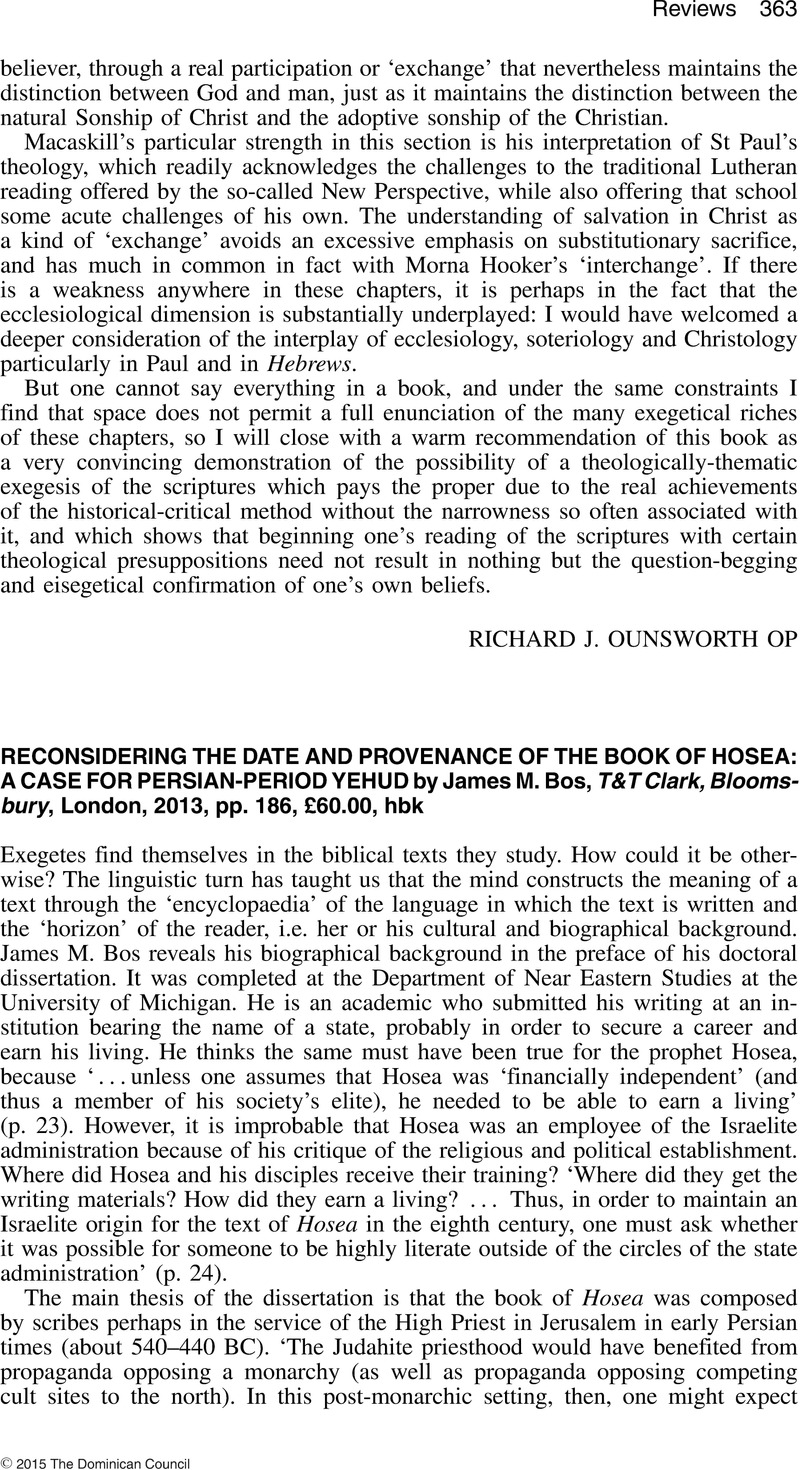No CrossRef data available.
Article contents
Reconsidering the Date and Provenance of the Book of Hosea: A Case for Persian-Period Yehud by James M. Bos, T&T Clark, Bloomsbury, London, 2013, pp. 186, £60.00, hbk
Review products
Reconsidering the Date and Provenance of the Book of Hosea: A Case for Persian-Period Yehud by James M. Bos, T&T Clark, Bloomsbury, London, 2013, pp. 186, £60.00, hbk
Published online by Cambridge University Press: 01 January 2024
Abstract
An abstract is not available for this content so a preview has been provided. Please use the Get access link above for information on how to access this content.

- Type
- Reviews
- Information
- Copyright
- Copyright © 2015 The Dominican Council


